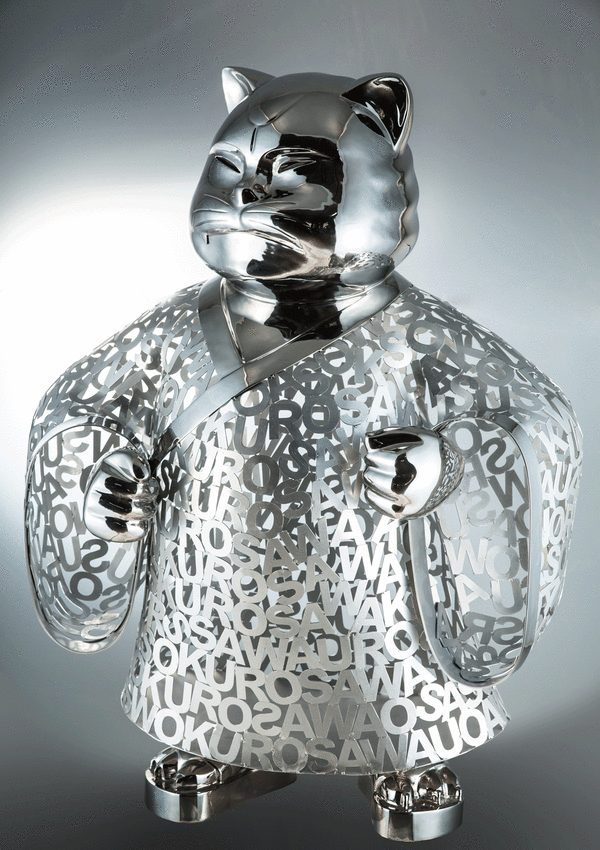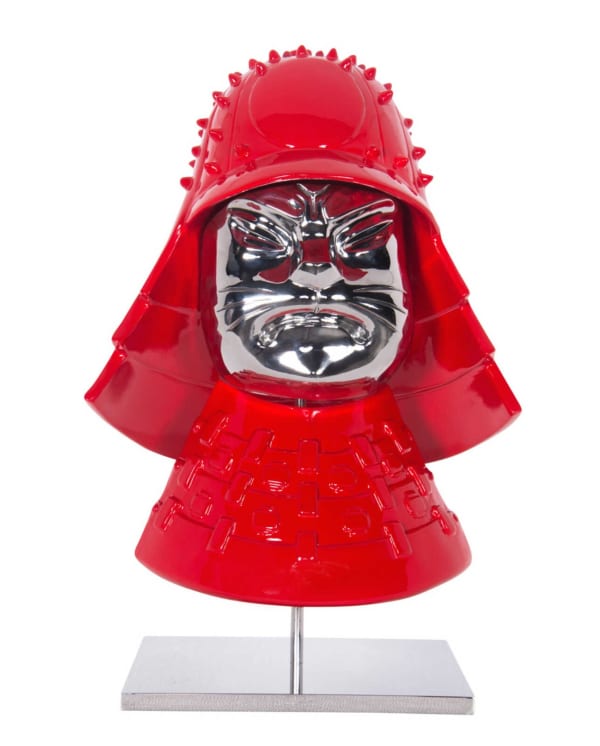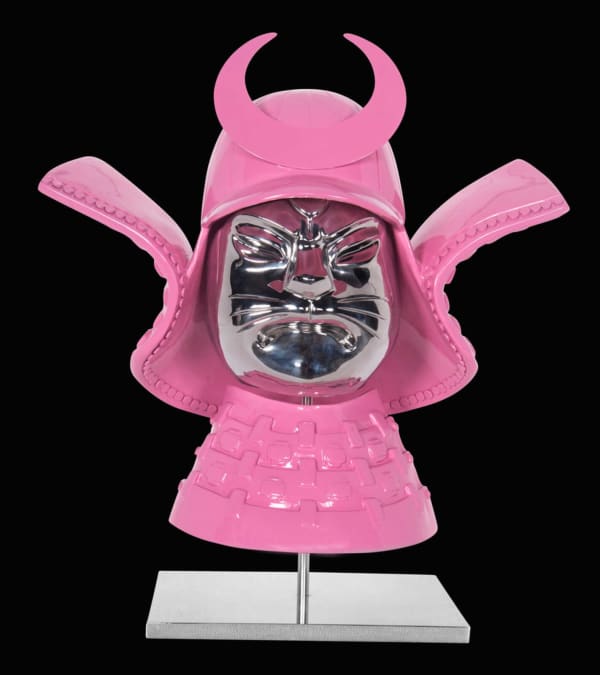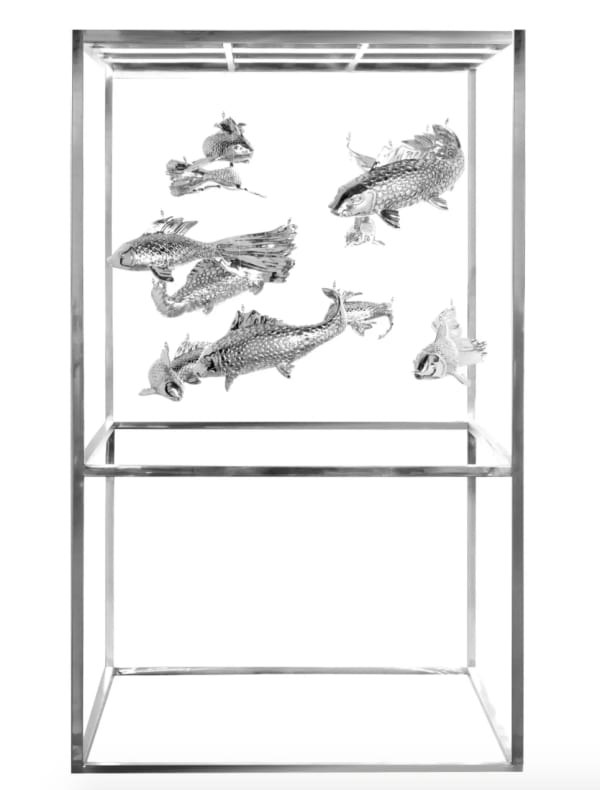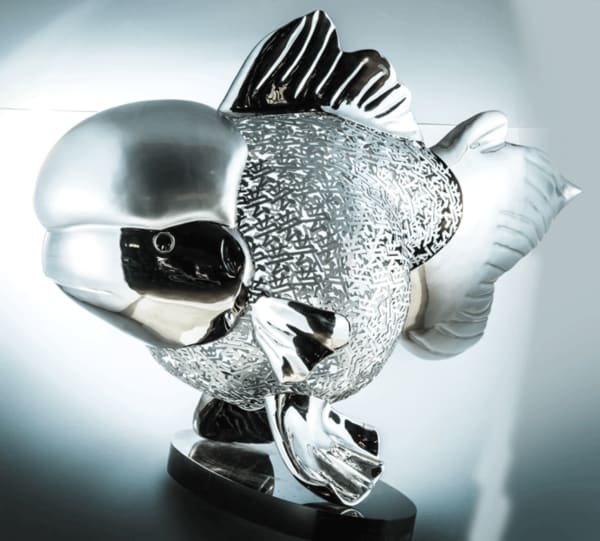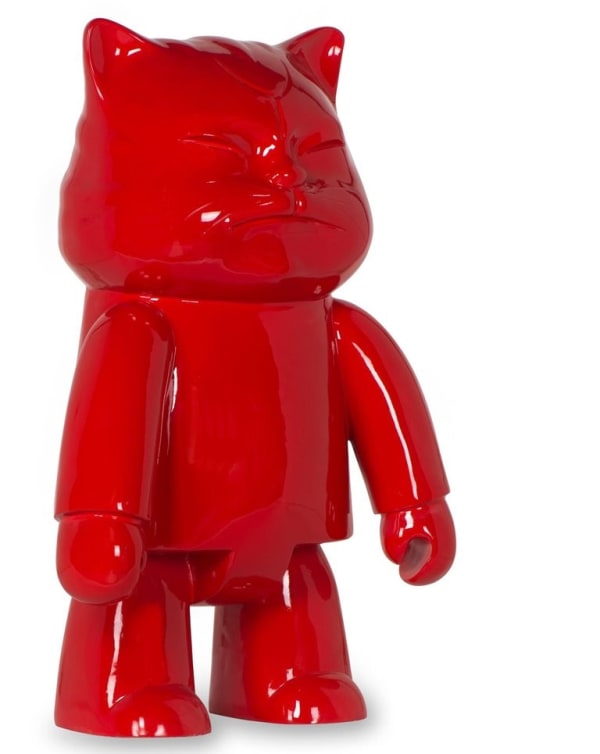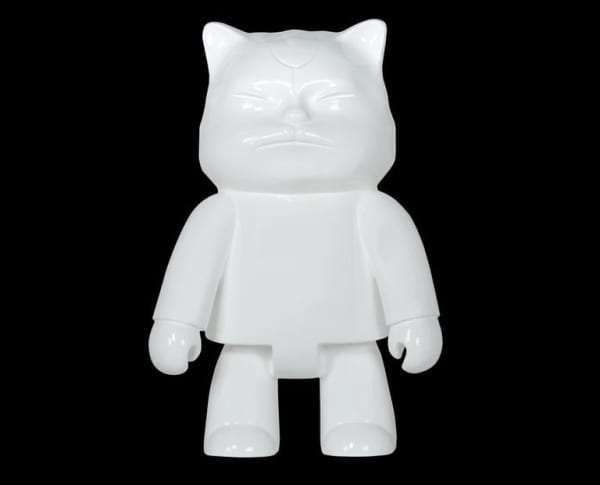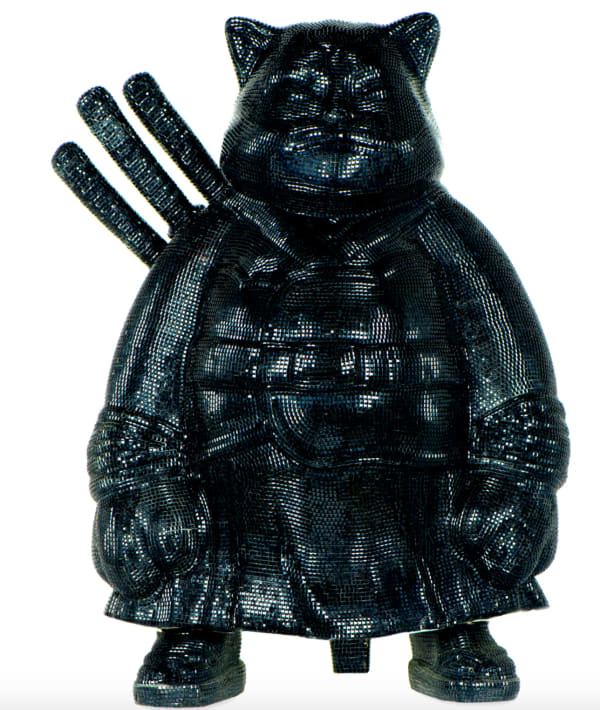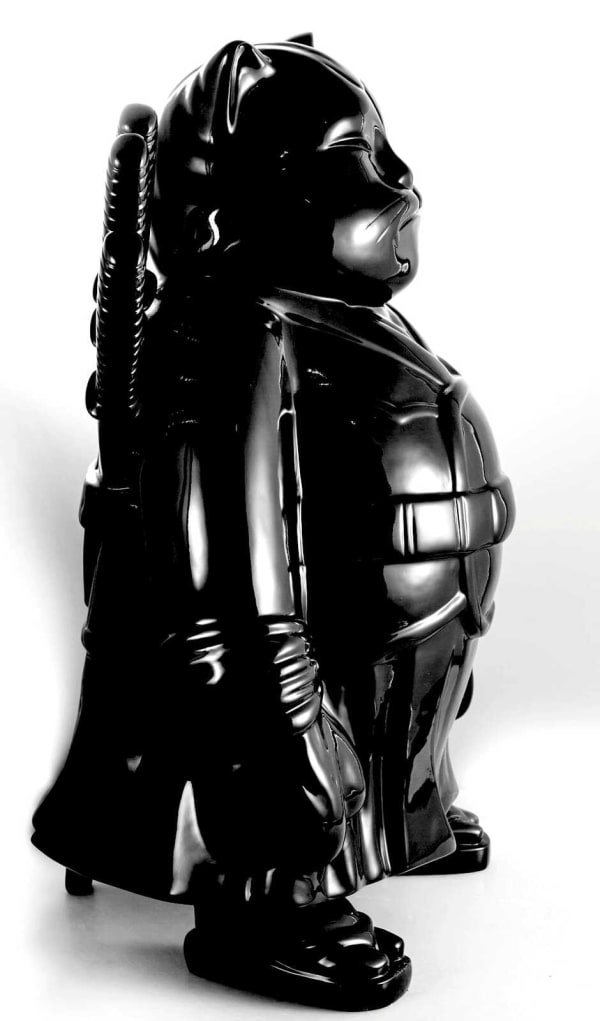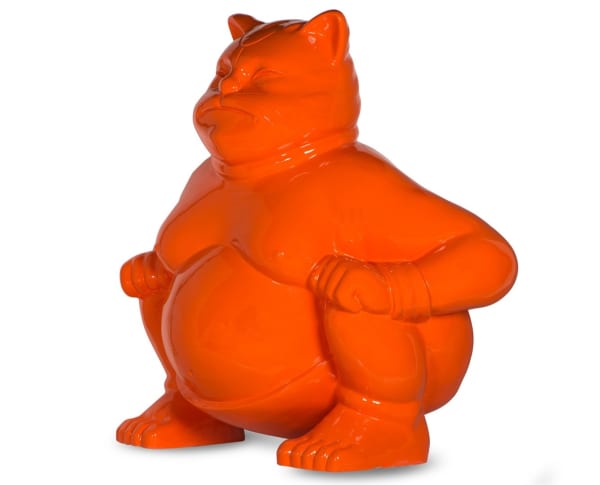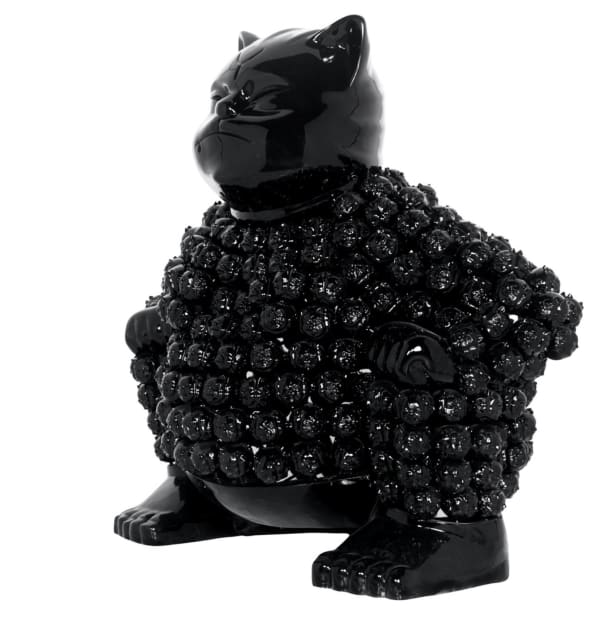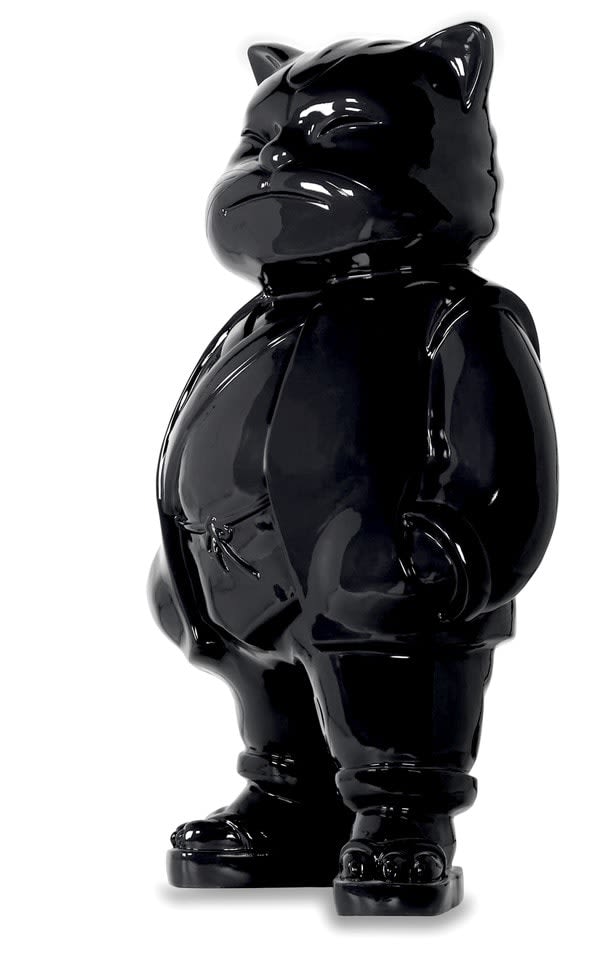HIRO ANDO JAPAN, 1973
Biographie
A VISION OF TOKYO
Inspired by the streets of Tokyo and the world of Manga, Japanese artist Hiro Ando creates bold, vibrant sculptures that merge tradition and modernity. His work bridges past and present, transforming cultural icons into contemporary art. Starting as an illustrator in 1995, Ando quickly expanded into painting, digital media, sculpture, and video. In 2005, he co-founded the Crazynoodles neo-pop artist collective with Saori Nakamishi, fostering a dynamic space for creative experimentation. Ando’s art is a fusion of old and new, deeply rooted in Japanese mass culture. His signature maneki-neko (lucky cat) sculptures reimagine this traditional symbol in various forms, including samurai, sumo wrestlers, and robots, reflecting Tokyo’s dynamic energy. His distinctive sculptures, celebrated for their vibrant aesthetic and playful reinterpretation of tradition, have gained recognition worldwide. Each piece blends pop culture and historical elements, creating a visual dialogue between heritage and innovation. Hiro Ando’s work stands at the crossroads of past and future, transforming familiar symbols into contemporary art that captivates and inspires.
Œuvres
-
 Hiro AndoBushi100 x 60 x 40 cm
Hiro AndoBushi100 x 60 x 40 cm -
 Hiro AndoKabuto "jiro" Masatora50 x 30 x 30 cm
Hiro AndoKabuto "jiro" Masatora50 x 30 x 30 cm -
 Hiro AndoKabuto "jiro" Masatora50 x 30 x 30 cm
Hiro AndoKabuto "jiro" Masatora50 x 30 x 30 cm -
 Hiro AndoKabuto "saburo" Naotora50 x 40 x 40 cm
Hiro AndoKabuto "saburo" Naotora50 x 40 x 40 cm -
 Hiro AndoKabuto "saburo" Naotora50 x 40 x 40 cm
Hiro AndoKabuto "saburo" Naotora50 x 40 x 40 cm -
 Hiro AndoKabuto "saburo" Naotora50 x 40 x 40 cm
Hiro AndoKabuto "saburo" Naotora50 x 40 x 40 cm -
 Hiro AndoKabuto "taro" Takatora50 x 30 x 30 cm
Hiro AndoKabuto "taro" Takatora50 x 30 x 30 cm -
 Hiro AndoKabuto "taro" Takatora50 x 30 x 30 cm
Hiro AndoKabuto "taro" Takatora50 x 30 x 30 cm -
 Hiro AndoKabuto "taro" Takatora50 x 30 x 30 cm
Hiro AndoKabuto "taro" Takatora50 x 30 x 30 cm -
 Hiro AndoKabuto "taro" Takatora50 x 30 x 30 cm
Hiro AndoKabuto "taro" Takatora50 x 30 x 30 cm -
 Hiro AndoKung-fu Cat BlackH60 cm / pre-order
Hiro AndoKung-fu Cat BlackH60 cm / pre-order -
 Hiro AndoMagoi & Higoi170 x 100 x 100 cm
Hiro AndoMagoi & Higoi170 x 100 x 100 cm -
 Hiro AndoNinja Cat WhiteH60 cm / pre-order
Hiro AndoNinja Cat WhiteH60 cm / pre-order -
 Hiro AndoNishikigoi Stainless Steel82 × 111 × 68 cm
Hiro AndoNishikigoi Stainless Steel82 × 111 × 68 cm -
 Hiro AndoNishikigoi Stainless Steel Blue82 x 111 x 68 cm
Hiro AndoNishikigoi Stainless Steel Blue82 x 111 x 68 cm -
 Hiro AndoPandasan - DiamondsStrass100 x 90 x 90
Hiro AndoPandasan - DiamondsStrass100 x 90 x 90 -
 Hiro AndoPandasan - Stainless Steel Polished100 x 90 x 90 cm
Hiro AndoPandasan - Stainless Steel Polished100 x 90 x 90 cm -
 Hiro AndoPandasan Flowerpower Blue100 x 90 x 90 cm
Hiro AndoPandasan Flowerpower Blue100 x 90 x 90 cm -
 Hiro AndoRoboCat Red60 × 40 × 30 cm
Hiro AndoRoboCat Red60 × 40 × 30 cm -
 Hiro AndoRoboCat White100 x 60 x 50 cm
Hiro AndoRoboCat White100 x 60 x 50 cm -
 Hiro AndoRoboCat Yellow100 x 60 x 50 cm
Hiro AndoRoboCat Yellow100 x 60 x 50 cm -
 Hiro AndoSamuraiCat - DiamondsStrass100 x 80 x 60 cm
Hiro AndoSamuraiCat - DiamondsStrass100 x 80 x 60 cm -
 Hiro AndoSamuraiCat Black150 x 90 x 60 cm
Hiro AndoSamuraiCat Black150 x 90 x 60 cm -
 Hiro AndoSamuraiCat Blue150 x 90 x 60 cm
Hiro AndoSamuraiCat Blue150 x 90 x 60 cm -
 Hiro AndoSamuraiCat DiamondsStrass Silver/ White100 x 80 x 40 cm
Hiro AndoSamuraiCat DiamondsStrass Silver/ White100 x 80 x 40 cm -
 Hiro AndoSamuraiCat Pink150 x 90 x 60 cm
Hiro AndoSamuraiCat Pink150 x 90 x 60 cm -
 Hiro AndoSamuraiCat Yellow150 x 90 x 60 cm
Hiro AndoSamuraiCat Yellow150 x 90 x 60 cm -
 Hiro AndoSatomi N.160 x 140 x 60 cm
Hiro AndoSatomi N.160 x 140 x 60 cm -
 Hiro AndoShogun Cat RedH60 cm / pre-order
Hiro AndoShogun Cat RedH60 cm / pre-order -
 Hiro AndoSumoCat100 x 120 x 80 cm
Hiro AndoSumoCat100 x 120 x 80 cm -
 Hiro AndoSumoCat - Stainless Steel Polished100 × 120 × 80 cm
Hiro AndoSumoCat - Stainless Steel Polished100 × 120 × 80 cm -
 Hiro AndoSUMONMYOJI130 × 120 × 80 cm
Hiro AndoSUMONMYOJI130 × 120 × 80 cm -
 Hiro AndoTanabata - Stainless Steel Polished200 × 190 × 180 cm
Hiro AndoTanabata - Stainless Steel Polished200 × 190 × 180 cm -
 Hiro AndoUrbanCat150 x 90 x 60 cm
Hiro AndoUrbanCat150 x 90 x 60 cm -
 Hiro AndoUrbanCat - Stainless Steel Polished100 × 60 × 40 cm
Hiro AndoUrbanCat - Stainless Steel Polished100 × 60 × 40 cm -
 Hiro AndoUrbanCat BLUE100 × 60 × 40 cm
Hiro AndoUrbanCat BLUE100 × 60 × 40 cm -
 Hiro AndoUrbanCat RED100 × 60 × 40 cm
Hiro AndoUrbanCat RED100 × 60 × 40 cm -
 Hiro AndoWarriorCat - DiamondsStrass100 × 150 × 70 cm
Hiro AndoWarriorCat - DiamondsStrass100 × 150 × 70 cm -
 Hiro AndoWarriorCat - Stainless Steel Polished100 × 150 × 60 cm
Hiro AndoWarriorCat - Stainless Steel Polished100 × 150 × 60 cm -
 Hiro AndoWarriorCat Black100 × 150 × 70 cm
Hiro AndoWarriorCat Black100 × 150 × 70 cm

